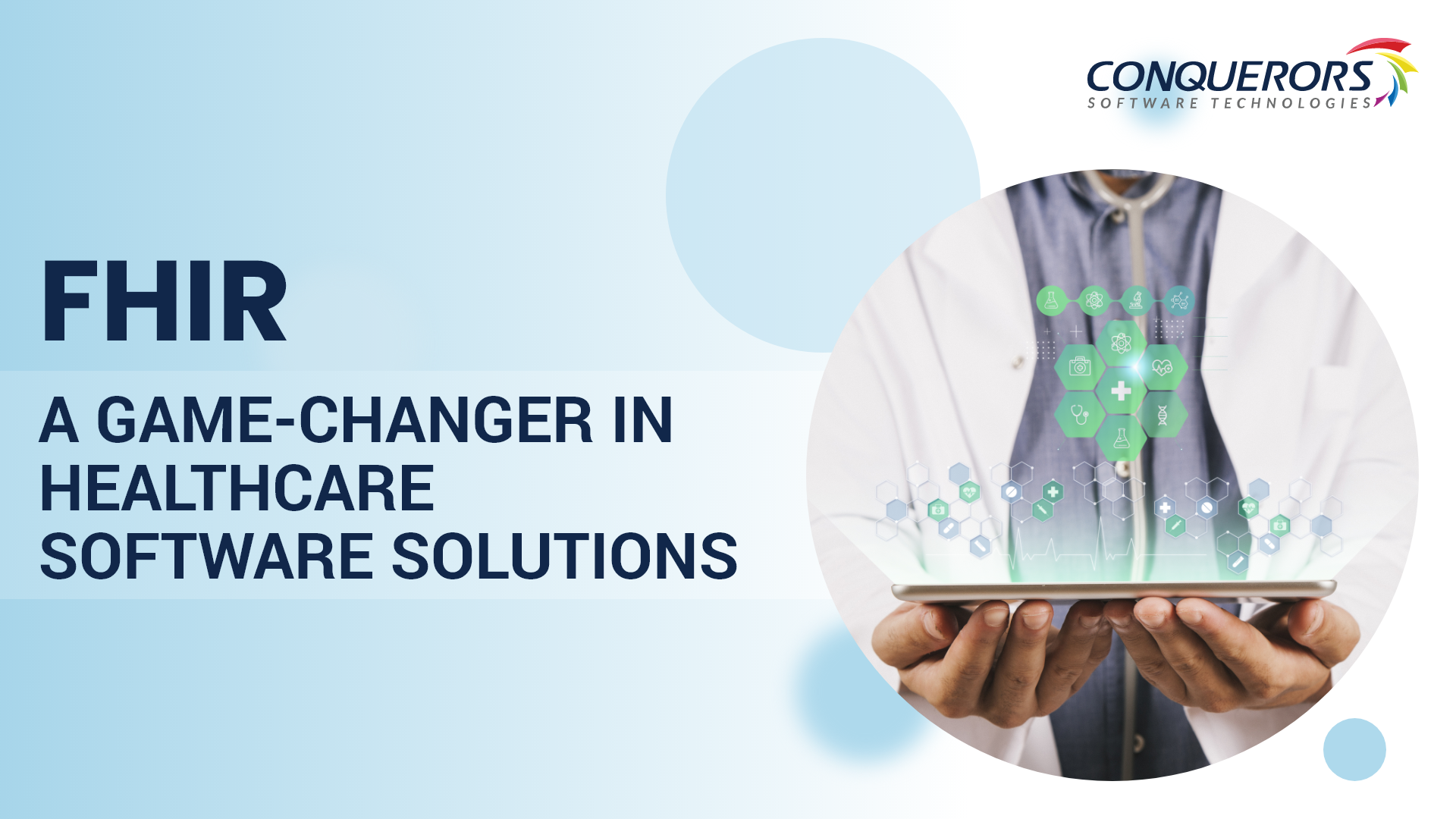FHIR: A Game-Changer in Healthcare Software Solutions
FHIR (Fast Healthcare Interoperability Resources) is revolutionizing the landscape of healthcare technology, emerging as the standard for sharing data among Electronic Health Records (EHRs) and healthcare information exchanges (HIEs). In this blog, we delve into the challenges of FHIR, exploring its functionalities and the promise it holds for the healthcare sector, particularly in the realms of healthcare software development, custom software development, and healthcare software solutions.
What is the FHIR Standard?
FHIR, an open-source standard introduced by Health Level Seven International in 2014, stands as a pinnacle of healthcare information exchange. Built upon decades of work with the HL7 standard, FHIR quickly gained widespread adoption, finding favor among major EHRs and influential players like Apple. Mandates from the 21st Century Cures Act and the Centers for Medicare Services have propelled FHIR into the forefront of healthcare standards.
How Does FHIR Work?
At its core, FHIR operates as a healthcare data interface, serving as the intermediary that allows disparate systems to communicate effectively. Unlike its predecessor HL7, FHIR embraces modern API technologies, including the RESTful protocol, making it more accessible to developers. Using the analogy of shapes, FHIR acts as a universal translator, ensuring that data elements (shapes) from one healthcare system, such as a provider code represented as a circle, are understood by another system that identifies it as a rectangle. This bridging of the gap in data exchange is crucial, especially considering the myriad ways EHRs and healthcare systems define and recognize different data types.
The Evolutionary Difference
FHIR represents the next step in the evolution of healthcare data exchange standards, addressing the limitations of HL7. It brings about several key advancements:
Solves Unstructured Data Exchange:
FHIR facilitates the exchange of both structured and unstructured data, eliminating the gap in interoperability caused by unstructured data, such as scanned images, handwritten notes, and PDF files.
Helps Build Interfaces Faster and Easier:
Built on HL7, FHIR embraces modern API technology, making it easier for developers to learn and implement. The adoption of RESTful protocols and a choice of data representation formats, such as JSON, XML, or RDF, streamlines the development of APIs.
Introduces Resources for Intuitive Data Sense:
FHIR introduces the concept of resources, defining 145 data categories representing common healthcare concepts. This enhances flexibility, making it easier for systems to recognize, organize, and use data intuitively.
Does FHIR Advance Semantic Interoperability?
FHIR accelerates healthcare’s journey toward semantic interoperability, where systems can exchange, interpret, and actively use data. While progress has been made, full semantic interoperability is yet to be achieved due to variations in data collection, coding, and processing. Ongoing efforts are focused on adding the next layer of semantic intelligence to FHIR messages and datasets.
Who’s in for the Change?
EHRs:
Major EHRs, including EPIC, Cerner, Allscripts, athenahealth, and others, have embraced FHIR-based APIs, covering a substantial portion of hospitals and clinicians. However, wider adoption and connection to these interfaces remain slow, underscoring the complexity of interoperability and the need for effective healthcare software solutions.
Game Changers:
Industry giants like Apple, Google, Amazon, Walmart, and Microsoft are actively pursuing FHIR-based solutions, setting the course for patient-focused capabilities and free health data exchange. Their involvement is crucial in shaping the future of healthcare software development and solutions.
Payers:
The 21st Century Cures Act mandates FHIR standards for data exchange among healthcare systems, pressuring payers to adopt and publish APIs for patient access, provider directories, and payer-to-payer communication. Compliance deadlines highlight the urgency for healthcare software solutions to facilitate seamless data exchange.
Providers:
While adoption is high among providers, progress has been limited to FHIR APIs provided by EHRs for hospitals and practices. The challenge lies in expanding adoption beyond clinical data exchange to areas like patient access and consumer service, emphasizing the need for innovative healthcare software development.
What is SMART on FHIR?
SMART on FHIR connects patients to their healthcare records through apps on various devices, revolutionizing patient access and experience. With SMART certification mandated by the 21st Century Cures Act and CMS rules, SMART on FHIR app development promises to be a lasting part of healthcare’s technology future.
What Can FHIR Do for Healthcare?
By establishing a common language across all healthcare systems, FHIR can:
Make Healthcare Data Exchange Faster and More Efficient:
Streamline the process of data exchange, ensuring efficiency and accuracy, supported by robust healthcare software solutions.
Improve Clinical Decision-Making and Care Coordination:
Enhance the quality of patient care by providing comprehensive and accessible health data, facilitated by advanced healthcare software development.
Empower Consumers with More Access to Health Information:
Enable patients to access their health information seamlessly from diverse systems, a crucial aspect addressed by user-friendly healthcare software solutions.
Amplify Financial Performance:
Enhance precision and speed in the revenue cycle, leading to improved financial outcomes, supported by healthcare software solutions that add value to the workflow.
How It Powers the Connected Care Experience
The potential of FHIR in healthcare is vast, promising a Connected Care Experience for everyone involved in the patient journey. Health IT companies, providers, and payers must formulate clear plans for interoperability, utilizing FHIR to its fullest extent, with a strategic focus on healthcare software solutions.
CONCLUSION
In navigating the complexities of FHIR implementation and interfaces, Conquerors Software Technologies offers a comprehensive solution. By providing a technology platform that facilitates 80 to 90 percent of the FHIR interface off the shelf, organizations can expedite their interoperability journey. Configuring specific endpoints, exporting data, and monitoring activities through a single management console become seamless with Conquerors software technologies, leveraging the full potential of FHIR and revolutionizing healthcare interoperability.
